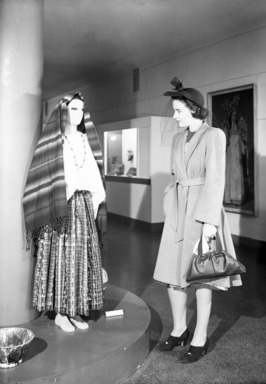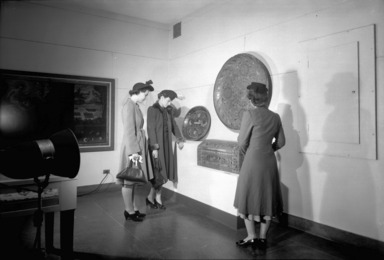

America South of U.S., November 13, 1941 through January 02, 1942 (Image: PHO_E1941i037.jpg Brooklyn Museum photograph, 1941)
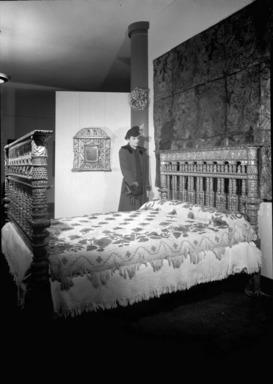
America South of U.S., November 13, 1941 through January 02, 1942 (Image: PHO_E1941i038.jpg Brooklyn Museum photograph, 1941)

America South of U.S., November 13, 1941 through January 02, 1942 (Image: PHO_E1941i039.jpg Brooklyn Museum photograph, 1941)

America South of U.S., November 13, 1941 through January 02, 1942 (Image: PHO_E1941i040.jpg Brooklyn Museum photograph, 1941)

America South of U.S., November 13, 1941 through January 02, 1942 (Image: PHO_E1941i041.jpg Brooklyn Museum photograph, 1941)
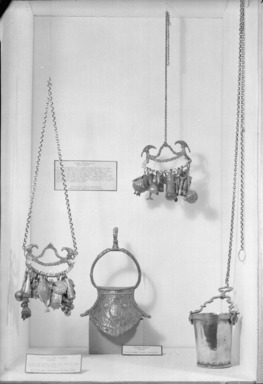
America South of U.S., November 13, 1941 through January 02, 1942 (Image: PHO_E1941i042.jpg Brooklyn Museum photograph, 1941)
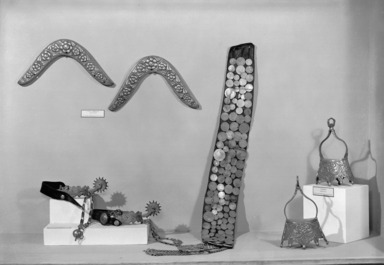
America South of U.S., November 13, 1941 through January 02, 1942 (Image: PHO_E1941i043.jpg Brooklyn Museum photograph, 1941)
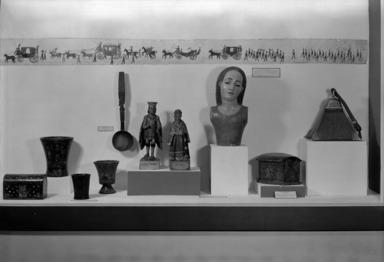
America South of U.S., November 13, 1941 through January 02, 1942 (Image: PHO_E1941i044.jpg Brooklyn Museum photograph, 1941)
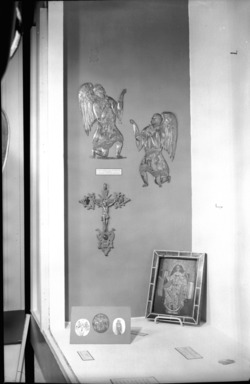
America South of U.S., November 13, 1941 through January 02, 1942 (Image: PHO_E1941i045.jpg Brooklyn Museum photograph, 1941)
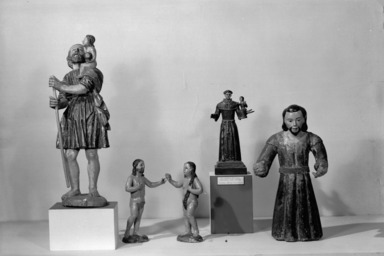
America South of U.S., November 13, 1941 through January 02, 1942 (Image: PHO_E1941i046.jpg Brooklyn Museum photograph, 1941)
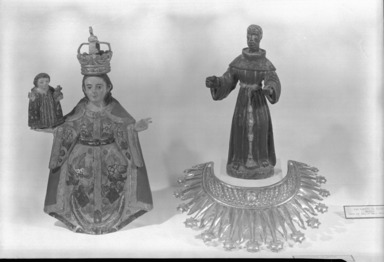
America South of U.S., November 13, 1941 through January 02, 1942 (Image: PHO_E1941i047.jpg Brooklyn Museum photograph, 1941)

America South of U.S., November 13, 1941 through January 02, 1942 (Image: PHO_E1941i048.jpg Brooklyn Museum photograph, 1941)
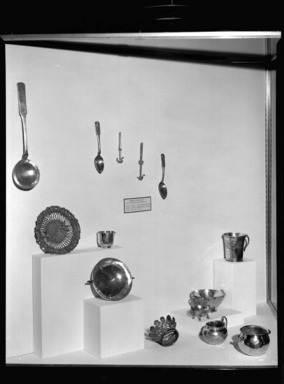
America South of U.S., November 13, 1941 through January 02, 1942 (Image: PHO_E1941i049.jpg Brooklyn Museum photograph, 1941)
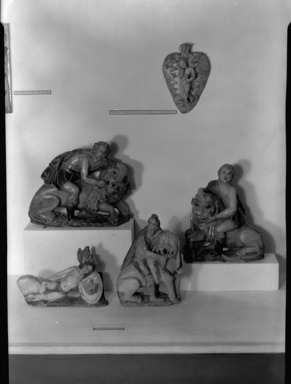
America South of U.S., November 13, 1941 through January 02, 1942 (Image: PHO_E1941i050.jpg Brooklyn Museum photograph, 1941)

America South of U.S., November 13, 1941 through January 02, 1942 (Image: PHO_E1941i051.jpg Brooklyn Museum photograph, 1941)
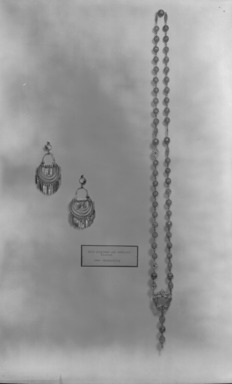
America South of U.S., November 13, 1941 through January 02, 1942 (Image: PHO_E1941i052.jpg Brooklyn Museum photograph, 1941)
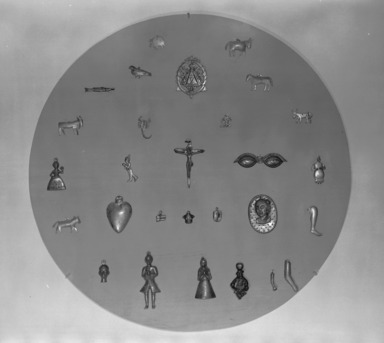
America South of U.S., November 13, 1941 through January 02, 1942 (Image: PHO_E1941i053.jpg Brooklyn Museum photograph, 1941)
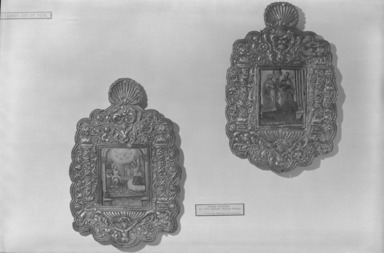
America South of U.S., November 13, 1941 through January 02, 1942 (Image: PHO_E1941i054.jpg Brooklyn Museum photograph, 1941)
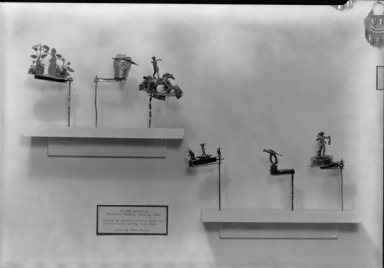
America South of U.S., November 13, 1941 through January 02, 1942 (Image: PHO_E1941i055.jpg Brooklyn Museum photograph, 1941)
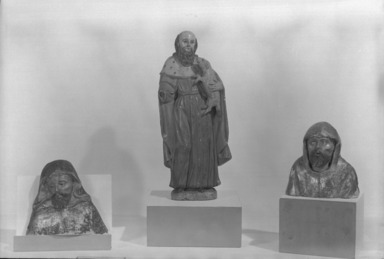
America South of U.S., November 13, 1941 through January 02, 1942 (Image: PHO_E1941i056.jpg Brooklyn Museum photograph, 1941)
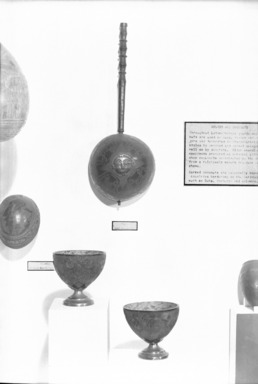
America South of U.S., November 13, 1941 through January 02, 1942 (Image: PHO_E1941i057.jpg Brooklyn Museum photograph, 1941)
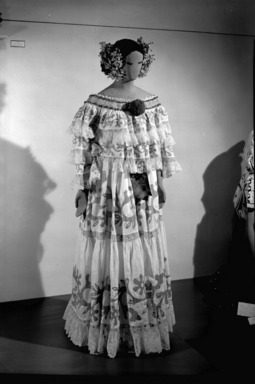
America South of U.S., November 13, 1941 through January 02, 1942 (Image: PHO_E1941i058.jpg Brooklyn Museum photograph, 1941)

America South of U.S., November 13, 1941 through January 02, 1942 (Image: PHO_E1941i059.jpg Brooklyn Museum photograph, 1941)
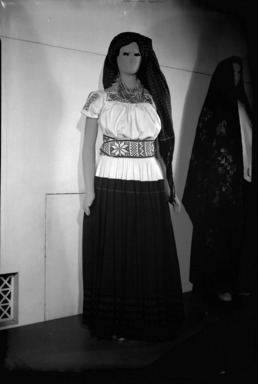
America South of U.S., November 13, 1941 through January 02, 1942 (Image: PHO_E1941i060.jpg Brooklyn Museum photograph, 1941)
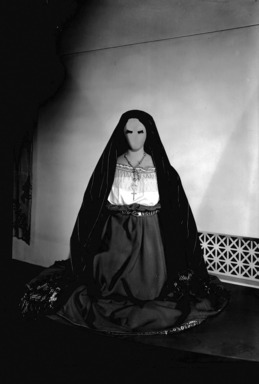
America South of U.S., November 13, 1941 through January 02, 1942 (Image: PHO_E1941i061.jpg Brooklyn Museum photograph, 1941)
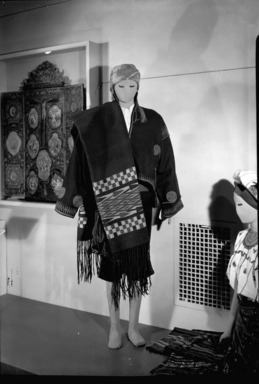
America South of U.S., November 13, 1941 through January 02, 1942 (Image: PHO_E1941i062.jpg Brooklyn Museum photograph, 1941)
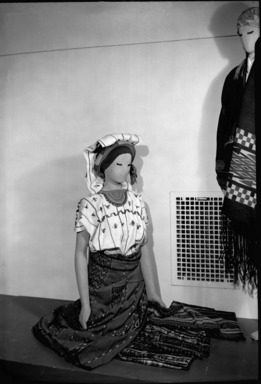
America South of U.S., November 13, 1941 through January 02, 1942 (Image: PHO_E1941i063.jpg Brooklyn Museum photograph, 1941)
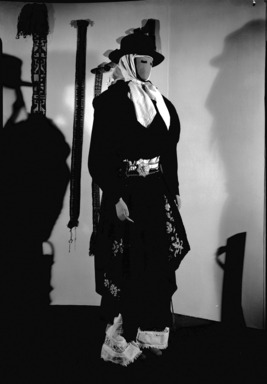
America South of U.S., November 13, 1941 through January 02, 1942 (Image: PHO_E1941i064.jpg Brooklyn Museum photograph, 1941)
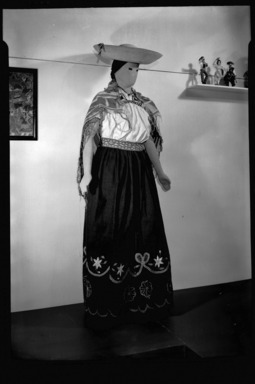
America South of U.S., November 13, 1941 through January 02, 1942 (Image: PHO_E1941i065.jpg Brooklyn Museum photograph, 1941)
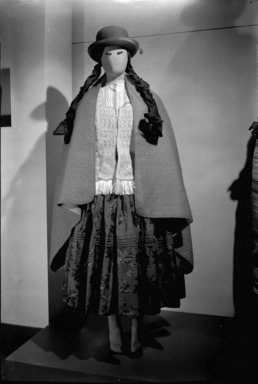
America South of U.S., November 13, 1941 through January 02, 1942 (Image: PHO_E1941i066.jpg Brooklyn Museum photograph, 1941)
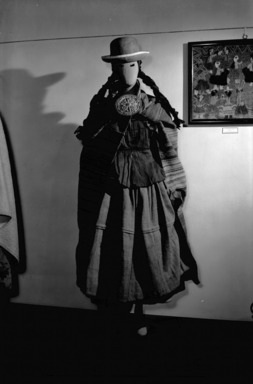
America South of U.S., November 13, 1941 through January 02, 1942 (Image: PHO_E1941i067.jpg Brooklyn Museum photograph, 1941)

America South of U.S., November 13, 1941 through January 02, 1942 (Image: PHO_E1941i068.jpg Brooklyn Museum photograph, 1941)
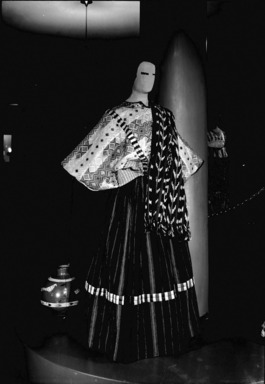
America South of U.S., November 13, 1941 through January 02, 1942 (Image: PHO_E1941i069.jpg Brooklyn Museum photograph, 1941)

America South of U.S., November 13, 1941 through January 02, 1942 (Image: PHO_E1941i070.jpg Brooklyn Museum photograph, 1941)
America South of U.S.
-
December 3, 1941
With the cooperation of Station WQXR, the Brooklyn Museum will give a series of three broadcasts, from 5:00 to 5:30, on the first three Wednesday afternoons of December - December 3, 10 and 17. These broadcasts will be related to aspects of Latin-American culture, and they are presented in connection with the Museum’s current major exhibition of colonial and folk art of Latin America, entitled, “America South of U. S.”
Each program will consist of a brief introduction by the Museum’s Editor, Mr. Theodore D. Starr, Jr., followed by a ten-minute talk by a guest speaker. The balance of each program will be made up of recordings of typical Latin-American music.
The guest speaker on the afternoon of December 3 will be Dr. Herbert J. Spinden, President of The Explorers Club and Curator of American Indian Art and Primitive Cultures at the Brooklyn Museum.
Dr. Paul Kosok, Conductor of the Brooklyn Civic Orchestra, who has just returned from several years' research in South America, will be the guest on December 10.
Jo Davidson, the well-known contemporary sculptor, will be the guest on the afternoon of December 17. Mr. Davidson has recently been in South America doing busts of Presidents of various Republics.
Brooklyn Museum Archives. Records of the Department of Public Information. Press releases, 1939 - 1941. 10-12/1941, 253.
View Original -
December 28, 1941
The Brooklyn Museum will present on Tuesday evening, December 30, the film entitled “South American Medley”, as the feature of the evening and as supplement to its current exhibition of colonial and folk art of Latin America, on view through January 4. The film will be shown in the Lecture Hall of the Museum at 8:00 o’clock.
Admission to the Museum is free at all times, and it is open on Tuesday evenings from 6:30 to 9:30.
Brooklyn Museum Archives. Records of the Department of Public Information. Press releases, 1939 - 1941. 10-12/1941, 281.
View Original -
December 22, 1941
“American All”, a feature film telling the story of civilization in the Americas, will be the special event at the Brooklyn Museum on Tuesday evening, December 23, at 8 o’clock. This film, presented in cooperation with the Office of the Coordinator of Inter-American Affairs, is being shown in connection with the exhibition of colonial and folk art of Latin America, entitled “America South of U.S.,” now on view at the Brooklyn Museum.
This program is offered free to the public, and visitors will also have an opportunity to see the exhibition, as the Museum will be open from 6:30 to 9:30, as usual on Tuesdays.
Brooklyn Museum Archives. Records of the Department of Public Information. Press releases, 1939 - 1941. 10-12/1941, 280.
View Original -
November 13, 1941
In conjunction with its current major exhibition, “America South of U.S.”, the Brooklyn Museum is now showing a collection of some thirty Latin-American costume sketches in water color by Reynaldo Luza, the well-known fashion illustrator. These costume sketches are exhibited in the Photography Gallery, second floor, at the head of the staircase from the Entrance Hall.
The sketches will remain on view through January 4, as does the major exhibition of colonial and folk art of Latin America.
Brooklyn Museum Archives. Records of the Department of Public Information. Press releases, 1939 - 1941. 10-12/1941, 250.
View Original -
November 13, 1941
List of Paintings
ENTRANCE HALL - Portraits of the Algara Family
Dona Ana Maria de Padilla y Cervantes
Dona Ana Maria de Cervantes, de Ozta y Velasco, de Algara
La Sra Da Josepha de la Cotera y Calvo de la Puerta, Marquesa de Rivascacho. 1816
Don Jose de Cervantes, de Ozta y de Velasco
El Sr. Don Joseph Ma. Cervantes, y Velasco, Padilla y Obando. 1802
El Sr. Don Juan Xavier Joachim Gutierrez Altamirano de Velasco - VII Count de Santiago de Calimaya, Marques de Salinas del Rio Pizuerga. 1752
Painted by Miguel Cabrera.
Dona Maria de los Angeles de Cervantes, de Ozta y de Velasco
Dona Maria de la Luz Padilla y Cervantes
Painted by Miguel Cabrera.
El Sr. Don Ingacio Leonel Gomez de Cervantes. 1798
El Sr. Don Juan Lorenzo Gutierrez Altamirano de Velasco VIII Count de Santiago de Calimaya, Marques de Salinas del Rio Pizuerga.
La Senora da Maria Josefa Villamil de Terreros
Don Ignacio Cecilio Algara y Gomez de la Casa
Painted by Pelogrin Clave.
Lent by Algara R. De Terreros.
“Our Lady of the Rosary” Mexico. 18th Century.
Lent by the Wadsworth Athenaeum
1st GALLERY (to left)
Two decorative panels. Mexico. Early 19th Century
Lent by the Philadelphia Museum
Portrait of a Girl. Mexico. Early 19th Century
Lent by Madame Helena Rubinstein.
“Franciscan Priest” (painting on buffalo hide) from Acoma, New Mexico, 18th Century
Brooklyn Museum Collection.
LARGE GALLERY (to right of entrance)
Portrait of a Nun. Mexico. Early 19th Century.
Lent by Madame Helena Rubinstein
“San Antonio and Christ Child” by Fray Miguel de Herrera (an Augustinian monk). Mexico. Signed, and dated 1725.
Lent by the Philadelphia Museum
“Virgin and Child” Mexico. 18th Century.
Lent by the Philadelphia Museum
“Santa Limbania Virgin” by Fray Miguel de Herrera. Mexico. Signed and dated 1725.
Lent by the Philadelphia Museum
(to left of entrance)
Two Mexican Children. Artist unknown. 18th Century.
Lent by the Philadelphia Museum
Portrait of Juana Ynos de la Cruz (copy of 17th Century self portrait). A poetess, and one of the most famous characters in Mexico.
Lent by the Philadelphia Museum.
“Madonna” Mexico. 18th Century.
Lent by Madame Helena Rubinstein.
“Mother and Child Enthroned” Mexico. 18th Century.
Lent by Wadsworth Athenaeum
Portrait of Senorita Maria Domingo de la Luz Oliverio. 1870. Painted when she was three years old. Mexico.
Lent by Madame Helena Rubinstein.
Portrait of Jose Manuel Villandrando, by Juan de Paroja, (1606-1670), pupil of Velasquez. The subject was the son of a distinguished Spaniard who, while visiting with his son in Quito, gave this portrait to a friend on his return to Spain. Ecuador. (Frame of the period).
Lent by Mrs. Reginald de Koven
(end wall)
Brazilian Landscape by the Dutch painter Franz Post (1612-1680)
Lent by the Detroit Institute of Arts
SQUARE GALLERY - PERUVIAN ROOM
(to right)
“Our Lady of the Rosary” 18th Century.
Brooklyn Museum Collection
“Madonna Ave Maria Gracia Plena” 17th Century
Lent by G. Schmidt y Pizarro
Portrait of the 11th Inca, Tupac Yupanqui (17th Century Painting)
Lent by the New York Historical Society
“Virgin and Child” Cuzco School, 18th Century
Brooklyn Museum Collection
“St. Joseph and Child” Cuzco School, 18th Century
Brooklyn Museum Collection
“Virgin of Mercy” Cuzco School, 18th Century
Brooklyn Museum Collection
Portrait of the 8th Inca, Viracocha. (17th Century painting)
Lent by the New York Historical Society
“Marriage of the Virgin" Cuzco School, about 1700
Brooklyn Museum Collection
“Virgin of Cocharcas” 18th Century
Lent by Mrs. William Braden
“Vision of St. Augustino” 17th Century
Brooklyn Museum Collection
Hunting Scene. 18th Century. (Painted on leather)
Lent by Mrs. William Braden
“San Antonio, with Episodes from the Childhood of Christ” 17th Century
Brooklyn Museum Collection
“Madonna and Child” About 1750
Lent by G. Salazar.
“San Ysidro Labrador” 18th Century
Patron Saint of Madrid, and in the New World very popular as the Patron Saint of the farmers.
Brooklyn Museum Collection
“St. Francis of Assisi” 17th Century
Lent by G. Schmidt y Pizarro
“St. Rapheal the Archangel” Probably 18th Century
Brooklyn Museum Collection
“The Adoration” Probably 18th Century
Brooklyn Museum Collection
“Christ before Pilate” 17th Century
Brooklyn Museum Collection
“The Ascension” Cuzco School, 18th Century
Lent by Mrs. Ernest Peixotto
Engraving of the Crucifixion, dated 1678
Brooklyn Museum Collection
“The Immaculate Conception” Late 17th 17th or early 18th century
Brooklyn Museum Collection.
Brooklyn Museum Archives. Records of the Department of Public Information. Press releases, 1939 - 1941. 10-12/1941, 238-40.
View Original -
November 13, 1941
Mrs. Huntington Adams
Mr. Algara R. de Terreros
Miss Florence Dibell Bartlett
Bonwit Teller
Mrs. Willian Braden
Dr. Arthur Edwin Bye
Mrs. Alexander M. Charlton
Mr. Arthur W. Clement
Cooper Union Museum
Mr. John Cunningham, Jr.
Mr. Frederick W. Davis
Mrs. Reginald de Koven
Mr. Rene d' Harnoncourt
Detroit Institute of Arts
Mrs. Irma Labastille
Mrs. Juan Vicente Lecuna
Miss Dorothy W. Liebes
Dr. Samuel K. Lothrop
Mr. Reynaldo Luza
Mrs. Dwight W. Morrow
Mrs. Howard M. Morse
Mrs. Robert Cushman Murphy
New York Historical Society
Old Print Shop
Peabody Museum, Harvard University
Mrs. Ernest Peixotto
Philadelphia Museum of Art
Miss Ruth Reeves
Dr. Rafael Requena
Mr. and Mrs. J. M. Rice
Madame Helena Rubinstein
Mr. Guillermo Salazar
Mr. G. Schmidt y Pizarro
Mr. G. Butler Sherwell
Dr. Robert C. Smith
Mr. William Spratling
Miss Charlotte Churchill Starr
Mrs. Alfred M. Tozzer
Traphagen School of Fashion
Wadsworth Athenaeum
Mr. John Jay Whitehead, Jr.
Mr. John Wise
Worcester Museum
Mrs. William D. Wrightson
Brooklyn Museum Archives. Records of the Department of Public Information. Press releases, 1939 - 1941. 10-12/1941, 237.
View Original -
November 12, 1941
Dr. Herbert J. Spinden, anthropologist, authority on American cultures and Curator of American Indian Art and Primitive Cultures at the Brooklyn Museum, has just returned from a trip he began in May to Brazil, Argentina, Chile, Peru, Bolivia, Colombia and Santo Domingo. He lectured in Spanish at the principal universities of these countries. His other activity was collecting examples of colonial and folk art in those countries for the Brooklyn Museum, some of which will be shown in the Museum’s forthcoming exhibition “America South of the U.S.” which opens on November 13. A result of this assembling will be to give the Brooklyn Museum the most comprehensive collection of the kind in the country.
NOTE TO EDITOR: Complete details can be obtained by interviewing Dr. Spinden by telephone or by appointment, as he is not always at the Museum.
Brooklyn Museum Archives. Records of the Department of Public Information. Press releases, 1939 - 1941. 10-12/1941, 204.
View Original -
November 14, 1941
One of the most comprehensive Latin American exhibitions be held in the current program in conjunction with the promotion of friendly Inter-American relations will be the show called “America South of U.S.,” which opens at the Brooklyn Museum on November 13, to run through January 4. The Museum is also arranging traveling exhibitions covering the colonial period in Latin America, for the Coordinator of Inter-American Affairs, Division of Art.
Although we realize you can make little use of this information at present, we are sending it to you so you may be informed well in advance. If you can make use of it before the middle of November it will be satisfactory to the Museum, which will try to cooperate in any way you suggest.
The underlying idea of the exhibition will be to demonstrate the amalgamation of Spanish, Indian and modern nationalistic art, which means the omission of Spanish or Portuguese importations or of art which is basically foreign.
This is a fitting exhibition for the Brooklyn Museum to stage, as it has the leading collection of Peruvian textiles, especially Paracas; and outstanding collections of Latin American archaeology; Costa Rican pottery, stone and gold; Ecuadorian pottery; Colombian gold; and models of Mayan buildings.
Brooklyn Museum Archives. Records of the Department of Public Information. Press releases, 1939 - 1941. 10-12/1941, 201.
View Original -
November 26, 1941
The Brooklyn Museum will present as the special event on next Tuesday evening a program of Cuban, Mexican and Portuguese dances by Lola Bravo and her group. This special performance of Latin American dances was designed to supplement the Museum’s major exhibition of the season, “America South of U.S.”, and the dancers come with the recommendation of the office of the Coordinator of Inter-American Affairs. The program will begin at 8:15, in the Sculpture Court.
The Brooklyn Museum will be open as usual on Tuesday evening, from 6:30 to 9:30.
Brooklyn Museum Archives. Records of the Department of Public Information. Press releases, 1939 - 1941. 10-12/1941, 248.
View Original -
November 13, 1941
The first showing of Colonial Latin-American objects and art to be seen in this country, including silver made especially for the Conquerer of Peru, Francisco Pizarro, opened last night (Wednesday, November 12) at the Brooklyn Museum with a private view to Museum members and their guests. It opens to the public today (November 13) and will continue through January 4. The exhibition is held in co-operation with the Office of the Coordinator of Inter-American Affairs, Nelson Rockefeller.
A dinner was held at the Museum for guests at the preview, attended by Members of the Governing Committee of the Museum, Consuls of South American countries, prominent South and Central Americans, and officials of other museums.
The significance of the exhibition, which is part of the national Latin-American program, is that it is the first in this country to show Colonial Latin-American art, the result of the mingling of the indigenous American Indian art and that of the Spanish Conquerors. A complete cross section of the arts of nearly all the countries of Central and South America is presented. The two predominant countries, however, are Mexico and Peru, as their native art, before the arrival of the Spanish Conquerors, was so highly developed and vital that only modifications were made by the Spanish influences.
The most noteworthy groups on view are the Mexican and Peruvian paintings, furniture, and objects from the collection of the Pizarro family which began with the Conqueror, Francisco Pizarro. The latter were lent by Mr. G. Schmidt y Pizarro. Work in this quantity and of the quality shown has never been seen in this country before. There is one large deep plate shown that was made especially for Francisco Pizarro and dated 1541, nineteen years after he first landed in Peru. Other objects from the collection are paintings, silver, ivory carvings, leather wall hangings from the Palace of Pizarro in Lima, Peru, and metal plates for printing religious pictures.
The sources of the vast amount of material that has been gathered together consist of loans, the Museum’s own collections and recent acquisitions never before shown, which were brought back this fall by Dr. Herbert J. Spinden, Curator of the Department of American Indian Art and Primitive Cultures, in whose department the exhibition falls. He made a trip from May to September visiting Argentina, Chile, Peru and Bolivia, where he lectured in Spanish at the principal universities of these countries, and at the same time collected examples of Colonial and Folk Art for the Museum and this exhibition. The selections for the exhibition omitted all objects of European origin.
The list of lenders is: (see attached last sheet)
The objects shown vary from large oil paintings to a case of little tinsel ornaments, called briscada. In between are religious figures, church and secular silver, lacquer work, pottery, furniture, hangings such as tapestries and other textiles, glass, costumes, wax figures, and several elaborate useful objects such as silver stirrups, whips, bolts and spurs. The exhibition shows the eagerness of the Spaniards to make use of the precious metals which they found in such abundance in the New World. Many objects that the natives had been making of less fine material were soon turned out in silver to please the Spaniards.
The plan of the exhibition also gives an idea of its variety. In the large Entrance Hall of the Museum are arranged over a dozen 18th and 19th Century portraits of the Algara family, paintings in oil from Mexico, one of which is by the most eminent name in the School, Miguel Cabrera. In the introductory gallery are other Mexican paintings of the early 19th Century, including one from Acoma, now in New Mexico, of a Franciscan priest lowering his girdle to the souls in Purgatory, painted on buffalo hide. Cases in this room display Mexican, Guatemalan and Southwest United States religious figures, and Mexican and Guatemalan silver.
The large principal gallery in the section of Special Exhibitions includes most of the other countries of Central and South America, except Peru, objects from which are displayed in the last two galleries. In the large gallery a wide variety of classifications are represented. The first to catch the eye of the visitor is a group of colorful Mexican costumes arranged on a low platform in which is included the China Poblana costume, a rarity, lent by Madame Helena Rubinstein, an old costume considered the finest example of its kind in this country. The only other comparable one is in a museum in Mexico. This type is now in effect the Mexican national costume, characterized by the use of vari-colored bright spangles. The story of the origin of the type is told by Frances Toor in “Mexican Popular Arts.” She states: “At one time the China Poblana costume, unadorned, was used for daily wear by Puebla woman. The legend accounting for its origin relates that centuries ago a pirate ship brought a beautiful and wealthy Chinese princess to Mexico’s shores; that the pirates sold her to a rich Puebla merchant; that she embraced the Catholic faith; gave all her wealth to the Church and abandoned her costly Chinese dress for this simple one. As she was very much beloved by the women of Puebla, they began to imitate her style of dressing.”
The rest of the gallery presents a wide assortment of objects arranged for visual effect rather than close adherence to the country of origin, and bears out the popular impression that Latin-American arts are highly colorful. An important group is the fourteen Mexican paintings of the 18th and 19th Centuries. Other Mexican objects are pottery, silver and glass; a group of eight contemporary Mexican regional costumes, which are considered a cross section of the present-day native costume; lacquered objects; 19th Century wax figures; and an ambitious posebre, or creche, showing the figures of the Nativity, the Three Kings on horseback, and countrymen, arranged in a Renaissance pillared hall with a red-and-white checkered floor.
The exhibit continues with Guatemalan costumes; religious figures from Colombia, Venezuela and Bolivia; and a collection of decorative gourds from all countries. Several objects of furniture such as a highly carved bargueno, or table desk, a gilt and gesso tabernacle, and a chest comprise one group from Chile and the Argentine; religious figures from the Argentine, Paraguay, Brazil and Chile; secular silver such as spurs, whips, and stirrups from Chile, Argentine and Brazil; Brazilian jewelry and silver; contemporary prints; Ecuadorian boxes; costumes from Panama, Guatemala, Peru, Bolivia and Ecuador, with a special group from Cuzco in Peru, one of the great sources of the world’s finest textiles; and an enormous church bench from Chile which won first prize at a Santiago, Chile, exhibition as the finest piece of Chilean furniture shown. This is from the distinguished Braden Collection, probably the best Latin-American collection of furniture in existence. Several other pieces from it are shown in the Peruvian section.
In the gallery that separates the last large gallery from the main one, the Peruvian section begins in earnest. The only objects shown here not Peruvian are two carved-wood balcony doors from Bolivia. Peruvian objects are textiles, at which the Peruvian weavers excelled over all the world; two large tapestry hangings; a collection of pottery, including some highly glazed figures of bulls made of yellow paste, the bulls laden doen with decorations, supposedly awards received at a fair.
The curious stirrups developed by the Spaniards because of the conditions of mountain travel are shown in their various stages. In the narrow, rocky defiles sturdy protection was found to be needed for a horseman. At first thick skin was used and abandoned for extremely hard wood. A square box-like object was made with a hole gouged out for the foot. This later developed into a stirrup the shape of a pointed shoe when it was made out of heavy brass. In complete contrast to this kind of useful object is a case of briscada, little costume and hair ornaments of pure silver tinsel.
When entering the last gallery, the visitor first sees a panel on which is hung a gold, silver and red tooled leather hanging, over a richly carved table, flanked by two highly carved pillars. Back of this wall is an enormous carved and gilded bed. These pieces are from the Braden Collection.
A large part of the wall space in this gallery is taken up with the collection of 17th Century Peruvian paintings. This group shows less Spanish influence than the Mexican group. Dr. Spinden draws some conclusions on Latin-American painting, which are some of the first to be offered. It is his opinion that the ones painted in a more didactic manner and in which blue is predominant are probably the earliest. As time went on, work known as the Cuzco School became typical, in which gilding was freely used, so that the result is somewhat reminiscent of Russian ikons. In this group the naivete of the Indian painters is demonstrated by their confusion of the attributes of the Saints. The New World Saints, Santa Rosa of Lima and the Virgin of Guadalupe, are represented in several canvasses.
In the Peruvian group are two portraits of Incas, both 17th Century: one of Viracocha, the 8th Inca, and the other of Tupac Yupanqui, the 11th Inca; both lent by the New York Historical Society. Other objects in the Peruvian Gallery are jewelry, silver, glass, and a special group of Huamanga stone, work, a variety of soapstone that has a warm meerochaum color.
The Seals of the twenty-one American republics displayed in the Entrance Hall, and the costume mannequins in the galleries as well as the posters for the exhibition were all produced by the NYC-WPA Project at the Brooklyn Museum.
Brooklyn Museum Archives. Records of the Department of Public Information. Press releases, 1939 - 1941. 10-12/1941, 232-6.
View Original -
October 10, 1941
In his report to the Trustees for the months of June through September, Laurance P. Roberts, Director of the Brooklyn Museum, gave figures that show a progressive increase in attendance at the Central Museum, month by month over the summer of 1940, form 7% for June to 21% for September, making a 14% increase for the summer of 1941 over 1940.
Two outstanding classes of acquisitions are reviewed by Mr. Roberts in addition to the report of accessions in detail. The latter will be on view in an exhibition of Recent Accessions, which opens October 23. The principal additions to the collections are in the Department of American Indian Arts and Primitive Cultures and the Department of American Rooms.
Due to the activities of Dr. Herbert J. Spinden, Curator of the Department of American Indian Art and Primitive Cultures, who spent this summer in South America lecturing and collection, and the work of Miss Virginia Montgomery while in Mexico, the Museum now possesses important additions to its South American and Mexican collections. The emphasis was all placed on objects classed as Colonial; that is, those made along Spanish lines but definitely modified by the native workers of this hemisphere. Dr. Spinden found the material of this kind is disappearing fast. The Brooklyn Museum is the first in the country to emphasize the Colonial period of Latin America. Dr. Spinden believes that in two years it will be impossible to acquire examples of this period except in rare instances. This new materials will have its first showing in the forthcoming exhibition, “America South of U.S.” which opens November 13.
Dr. Spinden’s purchases include costumes, silver, wood-carving and leather objects. Miss Montogmery’s Mexican purchases are eight complete costumes which present a cross section of Mexican costumes and accessories, as well as many types of pottery, glass, basketry, weaving and toys.
Other activities, conducted with the Coordinator of Inter-American Affairs, has been work on small traveling shows of Central and South American Colonial material. Miss Nathalie Herman, Assistant in the Department of American Indian Art and Primitive Cultures, is in charge of this work. Two more shows already arranged for are to follow and there are negotiations in process for three others.
Acquisitions in the Department of American Rooms indicate the importance of this part of the Museum, which when research work and new construction is finished will have a re-opening in its new form. Mr. Roberts states in the report, “the Museum received during the summer, as a gift from Mr. and Mrs. William E. Griswold, the elaborate mahogany paneling, parquet flooring, beamed and plastered ceiling, paintings, furniture and accessories of the library of their house, 883 Fifth Avenue. This room was decorated by Leon Marcotte in 1882, and with the exception of an easel and a sofa has remained in its original condition to the present day. This gift completes the collection of 19th Century rooms, and when erected beside the Sperry-Clarkson house of 1836 and the Saratoga rooms of 1856 it will give the Museum a survey of 19th Century interiors which cannot be duplicated in any other museum.”
As a result of research by John M. Graham, Curator of the Department of American Rooms, several of the rooms already on view are being repainted their original colors. In the Nicholas Schenck house especially, many layers of paint have been carefully removed down to the first coat exposing the old Dutch colors, which correspond with the interior of an 18th Century house in Williamsburg, Queensborough, discovered by Mr. Graham, that serves as a corroboration of the correctness of the Museum’s discovery. The original colors are being brought to their original condition so the interior may present as complete a picture of the era as possible. Hand-sewn curtains made from old fabrics are also being acquired, as well as maps and prints of the period.
Brooklyn Museum Archives. Records of the Department of Public Information. Press releases, 1939 - 1941. 10-12/1941, 209-10.
View Original

